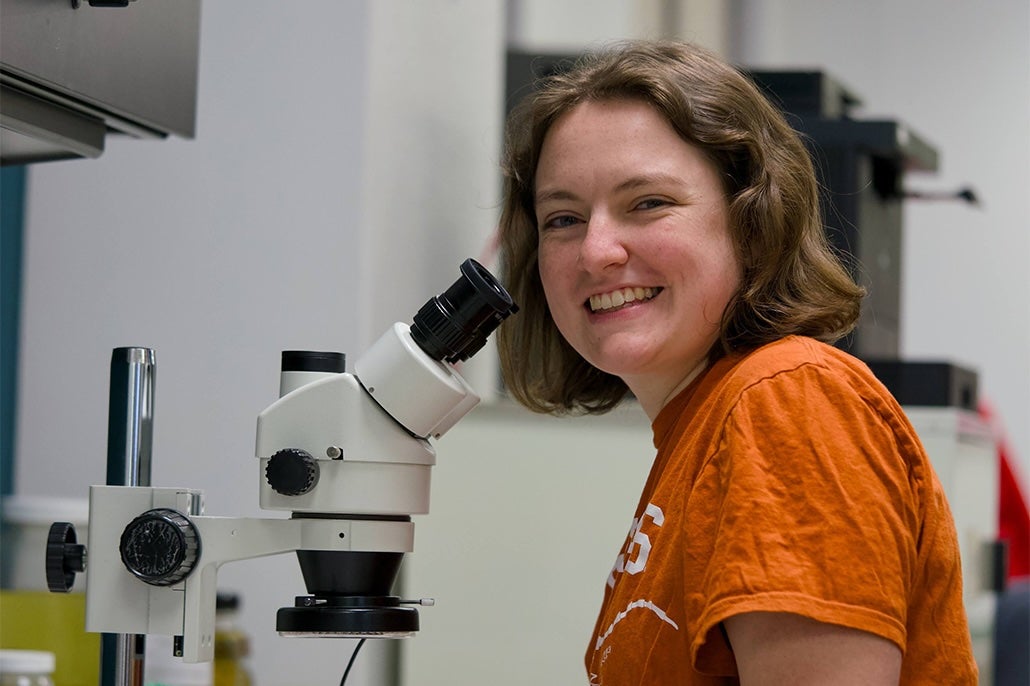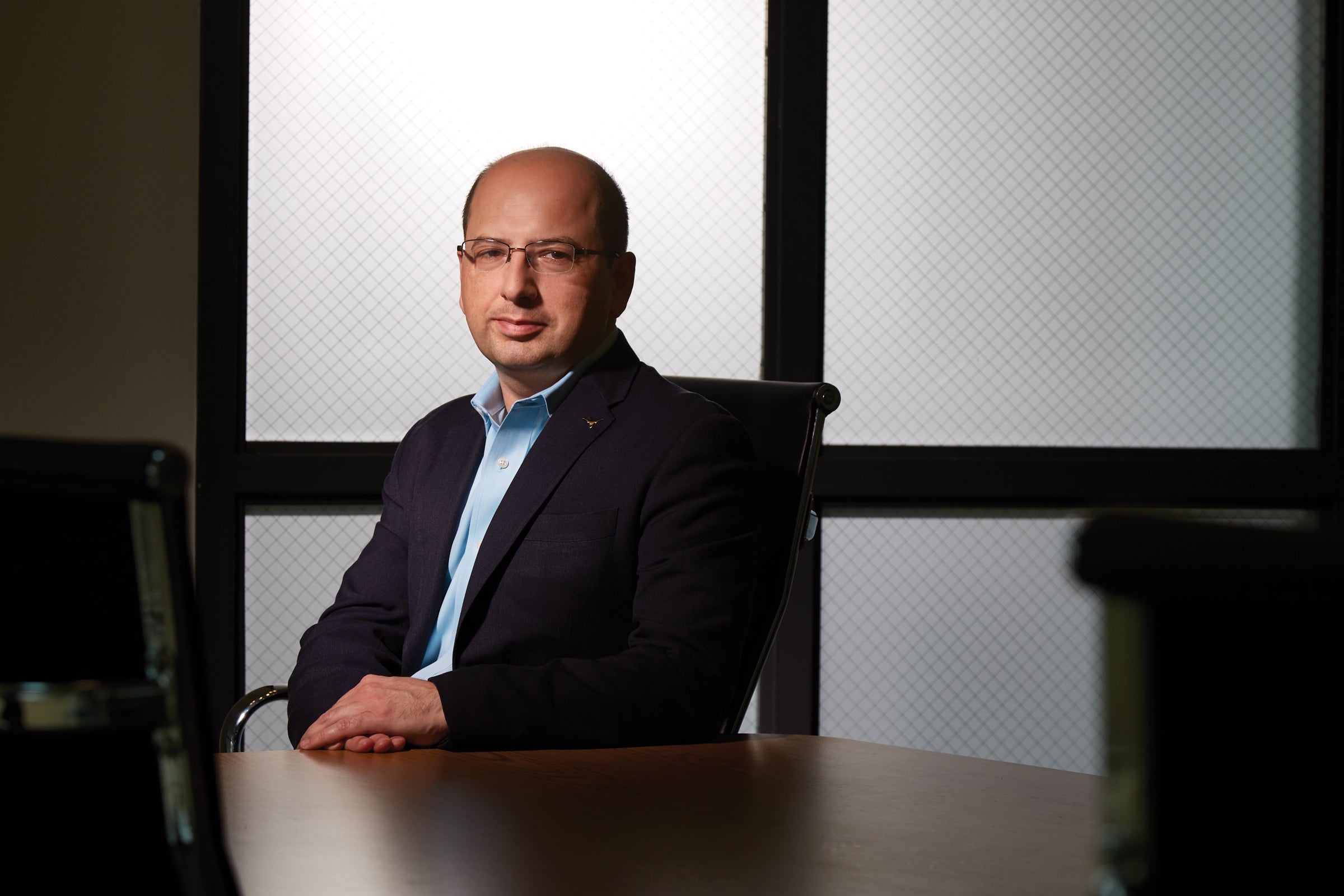AIDS Research by Alum Left Lasting Impact
Dr. Nahmias' impassioned pursuit of new knowledge, especially related to the AIDS virus, made a difference for many.
André Nahmias (BA '50, MA '52) first encountered what he calls "the ecstasy of discovery" when he was a University of Texas at Austin student. In the intervening decades as an infectious disease research pediatrician, he made a number of discoveries that benefited people with various bacterial and viral infections.
His impassioned pursuit of new knowledge made a difference especially for people with AIDS. That's because Dr. Nahmias worked with colleagues to trace the origin of the AIDS virus, detecting it in a sample from Kinshasa and discovering the roots of the virus were in Central Africa. He established the first clinic for children with AIDS in the Deep South and helped introduce the earliest routine HIV screening for pregnant women. He organized the first world conference on AIDS in children, adolescents and heterosexual adults attended by the World Health Organization and the Centers for Disease Control. He wrote an award-winning play and cantata about children with AIDS. And he recruited a family member to help find drugs to treat the virus—a nudge that ultimately led to a team at Emory developing effective drugs that are now used to save the lives of millions of people with HIV.
This May marks 35 years since scientists in France discovered the retrovirus called human immunodeficiency virus, according to U.S. Health & Human Services. HIV causes AIDS, the disease that in recent decades has killed tens of millions of people worldwide. Our understanding of the virus and the medical community's strategies for coping with it have been shaped repeatedly by Dr. André Nahmias, one of the people who will be inducted into the College of Natural Sciences' 2018 Hall of Honor. Today an Emory University professor emeritus, Dr. Nahmias looks back at a career investigating multiple diseases and viruses, including HIV—the retrovirus he continues to think of as "diabolical."
From Alexandria to Austin
Born in Egypt, Dr. Nahmias left Alexandria by himself, not yet 17, to attend the University of Texas at Austin. He came with many interests—natural sciences, literature, and the theater—but his path was clear to him. His mother had recently died of cancer, and he wanted to fulfill a promise to her that he would become a physician.
"I was blessed to have a mother, an educated woman unable to attend a university, who fostered in me the love and passion for reading and learning," Dr. Nahmias recalled. "My businessman father modeled for me his joie de vivre and his resilience. All of these, I needed when coming alone to Texas. My two sisters also gave me something valuable in making friends at the weekly UT Friday Frolics: how to dance the jitterbug, tango, rumba, waltz."
The young Longhorn spent five years, from 1947 to 1952, involved in the UT Curtain Club, a theater group for which he wrote, acted in, directed and even produced plays. Dr. Nahmias completed his bachelor's degree in three years, and immediately entered a UT master's program in bacteriology. He conducted original research in Staphylococcus aureus and its resistance to penicillin. The experience hooked him on the delight of learning new insights through science.
"This provided an experience that stimulated me for the rest of my career: the 'Ecstasy of Discovery,' " he said. "Whether learning later the practical and basic aspects of pediatrics, virology, immunology or public health, I was always seeking to discover something new."
Nahmias also campaigned for and won a position in student government at UT. He rallied fellow international graduate students to support his candidacy. As a student assembly member, he called for opening the then-segregated campus to African-Americans, and to enroll more Hispanic students.
Disease Detective
After finishing his first master's degree, at the prompting of Dr. Charles Lankford, his faculty mentor, Dr. Nahmias moved to Ann Arbor, Michigan, to study epidemiology and receive another master's degree, this time in public health. By the time he entered medical school at GW in 1953, he had a well-developed interest in both the clinical and basic research aspects of the health sciences. With the connections of Dr. Lankford and the help of Senator Lyndon B. Johnson, the young Egyptian became a U.S. citizen in his second year of medical school. He completed his program, and started an internship with the U.S. Public Health Service Hospital on Staten Island. There , in working with merchant marines, he had his first experience with patients who had sexually transmitted diseases – an experience that later helped him to focus on the effects of these diseases on whole families, including children.
After finishing his internship, Dr. Nahmias joined the Epidemic Intelligence Service with the Communicable Disease Center (now the Centers for Disease Control and Prevention), where he conducted "disease detective" work, researching bacterial and viral infections that affect both humans and animals. One of his projects led him again to research staphylococcal infections, which were becoming increasingly antibiotic-resistant, leading to epidemics in healthcare settings across the country and the world. Dr. Nahmias helped push, with others at CDC, for all hospitals to have infection committees in place, and he published about it in top journals like the New England Journal of Medicine. After completing his pediatrics residency in Boston, he did a fellowship in Boston exploring virology and immunology. Boston was also where he worked in laboratories associated with Nobel Laureate John Enders to understand the evolution and other aspects of viruses, particularly Herpes viruses.
In 1964, Emory University invited André Nahmias to join the faculty in the Department of Pediatrics, as the director of a new Division of Infectious Diseases. With multi-year grants from the National Institutes for Health and other funders, Nahmias went on to make a series of groundbreaking discoveries with a variety of collaborators.
"I identified a new Herpes simplex virus, HSV type 2, involved with genital and neonatal herpes, adapted new methods of diagnosis in the laboratory, and coordinated the first NIH Antiviral Herpes Virus Program from 1973 to 1990," Dr. Nahmias said. "During this period, I also developed a deeper interest in the evolution of viruses, writing the first comprehensive review in 1977 with an Australian colleague."
In the early 1980s, when the AIDS virus had only recently been identified, Dr. Nahmias established the Deep South's first pediatric AIDS clinic. To make the case to Georgia's governor and legislature to support his clinic and the many adult cases, Nahmias used what he calls his "Texas politics" to explain that the same disease that the media had been covering as a plague for gay men and drug users was taking a fatal toll also in children, teenagers and women. Later, he helped to establish the Georgia AIDS Task Force and a viral laboratory for diagnosis and research on drugs for AIDS.
"Early on we knew that HIV was a diabolical retroviral agent that mutates rapidly as an RNA virus, like influenza, and remains in the body as a DNA virus, like herpes," Dr. Nahmias explained. "It suppresses the host immunity and produces severe and fatal effects."
At the global level, he initiated and became president of the International Interdisciplinary AIDS Foundation. The foundation supported projects around the world, from the U.S., and several European countries, to Brazil and Senegal. Dr. Nahmias's proudest accomplishment was working through IIAF to organize a worldwide conference in Atlanta in February 1987—the first discussions on AIDS in children, adolescents and heterosexual adults, involving 100 speakers and roughly 700 participants, with major U.S. and world health organizations among them. A book about the meeting was published in 1988.
Tracing AIDS' Start
As devastating as AIDS was in those days, Dr. Nahmias and those who worked with him in the clinic met some early successes. When they started obtaining consent from pregnant women to screen them routinely for HIV, they were able to caution women with the virus against breastfeeding their babies. "With no antivirals available at the time, we were able to reduce the proportion of HIV infections in the children of infected mothers from around 25-30 percent to 20 percent or less by substituting breastfeeding with formula."
Still, watching the virus take its toll, the pediatric researcher dreamed of a better way to fight the disease, and in 1986 he received one of the few NIH AIDS Drug Discovery program grants. He had earlier reached out to his sister's son, a Ph.D. chemist in England and now suggested that his nephew, Raymond Schinazi, first train at Yale in drug chemical developments and then come work in the Nahmias lab at Emory to develop antiviral drugs. Schinazi became an Emory faculty member himself and led a group that developed a series of FDA-approved drugs, including several against HIV. One drug is currently used for both therapy and prevention of HIV in 80 percent of treated HIV patients in the world.
Nahmias, the one-time disease detective, also knew that finding the origins of a virus might provide critical insights. Having met advocates who worked with AIDS patients in Africa, he floated an idea with a collaborator on another project, who had collected blood plasma samples in Africa during the 1950s.
"I hoped that analyzing the specimens might help discover the evolutionary origin of HIV. After testing more than 1000 specimens, only one—from 1959 near Kinshasa—was found to be positive." Dr. Nahmias had the HIV positivity of the specimen confirmed by five different HIV tests available at the time.
The finding was published in The Lancet in 1986. Twelve years later, Dr. Nahmias again was involved with this particular blood sample, when collaborators used genomic viral fragments to provide evidence of how and when humans first acquired HIV. As reported in the journal Nature in a paper Dr. Nahmias co-authored, HIV did not originate, as had been earlier believed, with men in the West in the early 1980s.
Before infecting more than 65 million people, this retrovirus had leapt from chimpanzees to humans in Central Africa some time in the first half of the twentieth century.
Curtain Calls
When he retired from Emory in 2003, Dr. Nahmias knew just what he wanted to do: continue to learn and advocate for children affected by AIDS and other issues.
"In 2010, still very much interested in the evolution and origin of HIV and other sexually transmitted infections, I coordinated, with Swedish colleagues, a seminar at the Nobel Mansion in Sweden on the evolution of sexually transmitted agents in humans and animals," he said.
Dr. Nahmias also enrolled in university courses in literature, the arts, science, philosophy and religion. Harkening back to his days in the UT Curtain Club, he enrolled in a musical theater course and penned a play titled Children of AIDS: The Grief and The Promise. The play centered around a young sexually abused girl with AIDS, a character based on a real child whom Nahmias, heartbreakingly, had not been able to save. In the fictionalized version, however, the girl survives and becomes a doctor, saving other children from the ravages of the disease. An Emory music professor helped write music for the piece, and the play was produced and performed for audiences in Atlanta. Twelve years ago, it took first prize at a World AIDS Day competition for artists.
"The last lines of the play/cantata, had the choir and the audience sing together," Dr. Nahmias recalled. "Can you hear the cries of children in the world today? … Make a promise to the children in the world today…"



